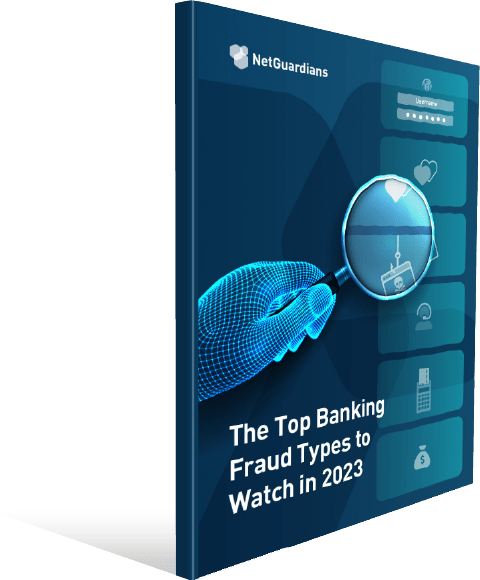The Top Banking Fraud Types to Watch in 2023
USE THE TABLE OF CONTENTS BELOW TO NAVIGATE THROUGH THE PAGE:
1. Introduction
The latest fraud stats make uncomfortable reading. Fraud is growing – relentlessly.
According to a report published in 2022 by the Association of Certified Fraud Examiners (ACFE), up to five percent of corporate revenue is currently lost to fraud every year. That’s estimated at US$4.7 trillion globally.
Sadly, the ACFE’s figure is likely on the conservative side. During global macro-economic downturns – like the one we’re facing today – crime, including fraud, tends to rise.
The ACFE report came out mid-2022. Since then, oil and food prices and interest rates have risen, increasing the cost of living across much of the world. This will be pushing more people toward criminal activity and fraud in the year ahead.
It’s also getting easier to commit fraud. For those without technical computer knowledge, crime- or fraud-as-a-service (CaaS), easily found on the dark web as well as Telegram and other messaging platforms, means software packages can now be rented or licensed in exactly the same way we all pay for Microsoft. Ransomware packages, for example, are available for $1,000 a month. This, too, will help drive up fraud losses throughout 2023.
But it’s not just the economic crisis and CaaS that will fuel growth. Criminals are sticking with tried-and-tested fraud types. Having said that, they are proving adept at adapting their schemes to seize on changing life and work patterns to stay one step ahead, not only of law enforcement and fraud-mitigation efforts, but also of rival criminal gangs.
So phishing scams – where they try to elicit personal information such as date of birth or passwords to help them perpetrate fraud – will remain a threat. Love, investment and delivery scams, as well as deep fakes, will continue to feature throughout 2023. In addition, we expect to see more fraud where criminals try to impersonate work colleagues in emails not only within companies but also in public bodies and institutions. This is a growing trend thanks to the increase in staff working from home as a result of the Covid-19 pandemic and using less secure computer networks.
We also predict a rise in attempts to install malware and efforts to overcome more advanced security measures such as two-factor authentication as well as touch or face identification. Mobile-phone SIM swaps, which we first saw in Africa, have become a growing problem in the rest of the world. As mobile banking and payments continue to rise, so will fraud. Indeed, our ever-larger digital footprints will continue to extend the potential attack vector, making identity theft as a result of hacks more likely. We will also see a rise in criminals hijacking QR codes to redirect users to fake websites or manipulate payments.
Thankfully, just as criminals use technology to try to commit fraud, so companies continue to develop technology that prevents it. 2023 will see the further development of intelligent systems that use artificial intelligence and machine learning to spot and stop fraud without adding friction for the user. Software built specifically for banks that learns over time is proving an indispensable line of defense in the fight against fraudsters. Sharing information about frauds through initiatives such as NetGuardians’ Community Scoring & Intelligence Service will also become ever more important in the battle against the criminals.
As the threat continues to grow, so will demand from banks and their stakeholders for these effective fraud-prevention solutions. 2023 won’t be an open season for fraudsters as far as companies like NetGuardians are concerned.
2. The 2023 Fraud Landscape
Our survey of the 2023 payment fraud landscape classifies frauds according to who initiates the payment – an authorized or unauthorized party. Both types tend to involve a combination of technology tools and efforts to manipulate and dupe the victim.
However, in almost all cases, the fraud is executed by initiating payments or withdrawals from victims’ accounts that are not consistent with their normal patterns of behavior. This is the weakness in such fraud attempts that enables NetGuardians’ AI software to identify and prevent them.













